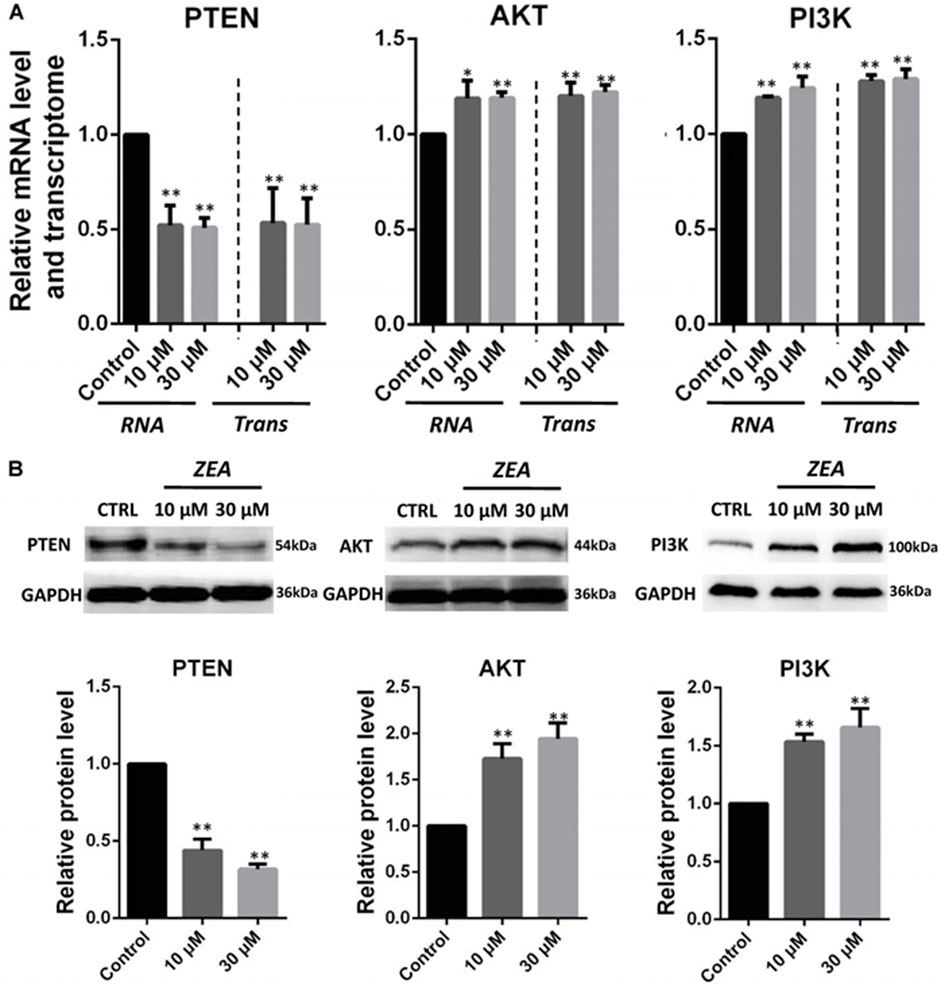
95% of researchers rate our articles as excellent or good
Learn more about the work of our research integrity team to safeguard the quality of each article we publish.
Find out more
CORRECTION article
Front. Genet. , 17 February 2025
Sec. Toxicogenomics
Volume 16 - 2025 | https://doi.org/10.3389/fgene.2025.1564143
This article is part of the Research Topic Genotoxic Pathways of Reproductive Outcomes View all 5 articles
This article is a correction to:
Zearalenone Exposure Enhanced the Expression of Tumorigenesis Genes in Donkey Granulosa Cells via the PTEN/PI3K/AKT Signaling Pathway
 Guo-Liang Zhang1,2
Guo-Liang Zhang1,2 Jun-Lin Song3
Jun-Lin Song3 Chuan-Liang Ji2
Chuan-Liang Ji2 Yu-Long Feng2
Yu-Long Feng2 Jie Yu2
Jie Yu2 Charles M. Nyachoti4
Charles M. Nyachoti4 Gong-She Yang1*
Gong-She Yang1*A Corrigendum on
Zearalenone exposure enhanced the expression of tumorigenesis genes in donkey granulosa cells via the PTEN/PI3K/AKT signaling pathway
by Zhang G-L, Song J-L, Ji C-L, Feng Y-L, Yu J, Nyachoti CM and Yang G-S (2018). Front. Genet. 9:293. doi: 10.3389/fgene.2018.00293
In the published article, there was an error in Figure 5B as published. The Western blot picture of the PI3K gene is incorrect. The corrected Figure 5B and its caption Figure 5 appear below.

Figure 5. Zearalenone exposure affecting mRNA and protein abundance of tumorigenesis related genes in cultured GCs. (A) Quantitative RT-PCR for CDK2, TGFβ, and ATM transcription factors. The mRNA levels of all genes were normalized to GCs GAPDH gene. (B) Protein levels of CDK2/GAPDH TGFβ/GAPDH, and ATM/GAPDH by Western blotting. The protein levels were normalized to GAPDH. The results are presented as mean ± SD. All experiments were repeated at least three times. *P < 0.05; **P < 0.01.
The authors apologize for this error and state that this does not change the scientific conclusions of the article in any way. The original article has been updated.
All claims expressed in this article are solely those of the authors and do not necessarily represent those of their affiliated organizations, or those of the publisher, the editors and the reviewers. Any product that may be evaluated in this article, or claim that may be made by its manufacturer, is not guaranteed or endorsed by the publisher.
Keywords: donkey, granulosa cells, tumorigenesis, gene expression, RNA-seq
Citation: Zhang G-L, Song J-L, Ji C-L, Feng Y-L, Yu J, Nyachoti CM and Yang G-S (2025) Corrigendum: Zearalenone exposure enhanced the expression of tumorigenesis genes in donkey granulosa cells via the PTEN/PI3K/AKT signaling pathway. Front. Genet. 16:1564143. doi: 10.3389/fgene.2025.1564143
Received: 21 January 2025; Accepted: 28 January 2025;
Published: 17 February 2025.
Edited and reviewed by:
Pierre R. Bushel, Harvard University, United StatesCopyright © 2025 Zhang, Song, Ji, Feng, Yu, Nyachoti and Yang. This is an open-access article distributed under the terms of the Creative Commons Attribution License (CC BY). The use, distribution or reproduction in other forums is permitted, provided the original author(s) and the copyright owner(s) are credited and that the original publication in this journal is cited, in accordance with accepted academic practice. No use, distribution or reproduction is permitted which does not comply with these terms.
*Correspondence: Gong-She Yang, MTUzMzUzMjkxOTFAMTYzLmNvbQ==
Disclaimer: All claims expressed in this article are solely those of the authors and do not necessarily represent those of their affiliated organizations, or those of the publisher, the editors and the reviewers. Any product that may be evaluated in this article or claim that may be made by its manufacturer is not guaranteed or endorsed by the publisher.
Research integrity at Frontiers

Learn more about the work of our research integrity team to safeguard the quality of each article we publish.